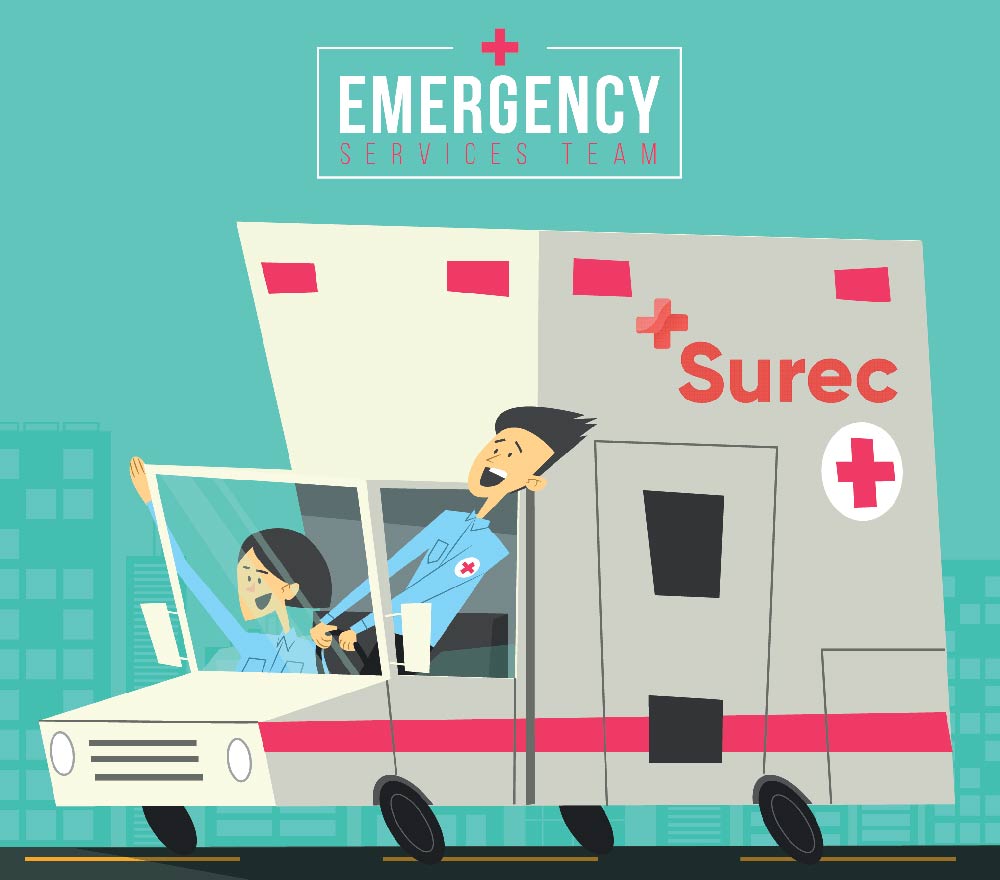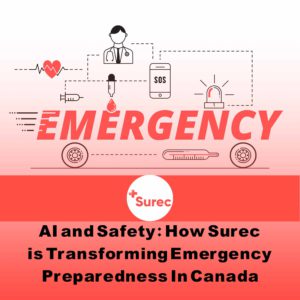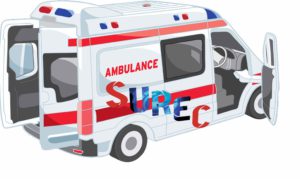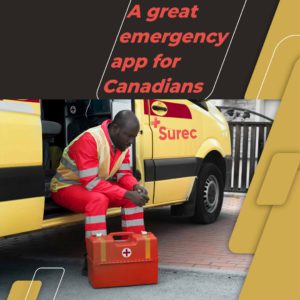Causes of delay in communication in emergency services
Delay in communication between emergency services can be a life-threatening situation. One of the ways to resolve this issue is by using AI-powered apps.
On the other hand, technology in emergency service has been used for years in the health industry. Communication has always been a key element in society. The emergency hospital communication system is one such example. In today’s world, EMTs have a lot of different ways through which they can communicate. One such method is radio communication. But what happens when the radio is no longer available in the middle of a mission? In general, delay in communication in emergency can cause serious problems. The reasons for delays in communication are many and varied. Some of the most common factors include:
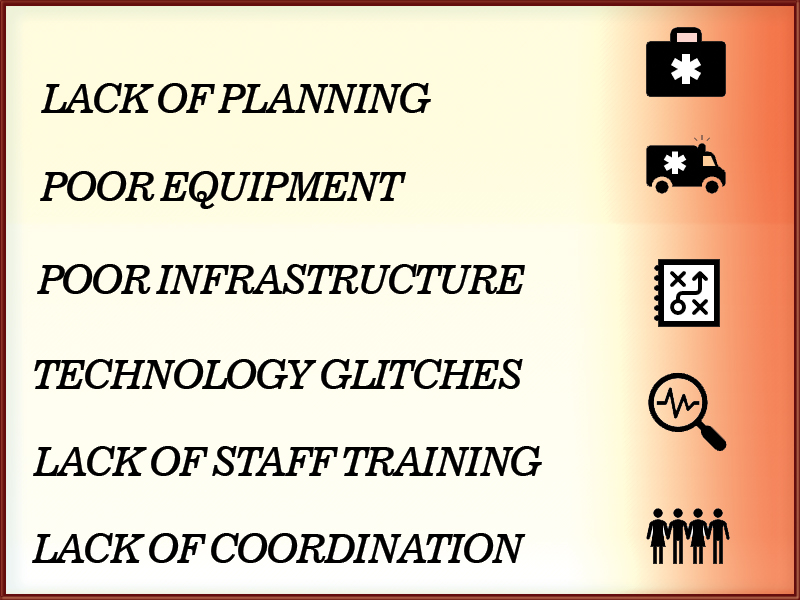
One of the most common causes of delay in communication is the lack of planning.
When an emergency arises, communication needs to happen quickly, and if the infrastructure doesn’t exist to prepare for it then these delays can occur.
In a crisis, the ability to communicate is vital for coordination and safety. In a communication in emergency response, the most common communication channels used are radio and telephone. With these methods of communication, we can get information from responders at a distance away from where an incident occurred.
Radio is a form of communication that uses radio waves to transmit information and sound. We can transform radio signals by sending electrical currents into the air. Also, they can only be heard within a small range from the transmitting station. In addition, the radio frequency used by emergency responders is 117 MHz (FM band).
A telephone is a device that can transmit voice signals over a wire or radio medium. Above all, a mobile telephone is a portable telephone that can be moved while still communicating with the fixed lines of a telecom network. The most common mobile phone systems are based on the GSM standard, though UMTS and EDGE are also widely used technologies in many markets.
The delay in communication is a major concern for emergency services. In fact, the emergency services rely on radio communications and the use of technology in emergency service to improve their efficiency.
The first step towards improving communication is the adoption of digital technology to improve radio communications. This can be done through a number of methods such as using an emergency radio, enhancing the analog radio waves with digital signals, and using a mobile phone as an emergency radio.
The second step is to have a well-trained AI-ML platform which will monitor the progress of the mission and act accordingly. These methods are not mutually exclusive and can be combined, but all require a commitment to effective communication.Digital technology could be added without taking any other action if the members of the team agreed on its adoption beforehand.
"In radio communications, the delay between transmission and reception is called the ping time, which is the time between an emergency dispatcher transmitting a message to an emergency ambulance and receiving a response from that ambulance."
What are the Causes of Delay in emergency services?
The timeliness and reliability of Emergency Medical Services (EMS) care are crucial for saving lives. The world’s population has been expanding quickly in recent years, which has a direct impact on how well EMS can handle the increasing volume of emergency 911 calls by stabilizing and transporting patients.
The number of 911 calls in Canada has increased, which has led to an increase in intra- and inter-agency communication delays. If these delays are reduced, response times can be improved. Delays are brought on by the intricate world of 911 calls and the systems that respond to them. The Dispatch Center, which must organize a quick and efficient ambulance response and prioritize 911 calls, receives several calls and transmissions from numerous sources. One of the most significant reasons for increasing delays is staff shortages.
For example, more than one million events were responded to in 2021, which marks an all-time record. According to Ambulance Paramedics of B.C.
Emergency Health Services ambulance personnel claims the number is probably far higher and that more than 840,000 of those calls came via the dispatch system of B.C. Emergency Health Services in Vancouver. As an example, In the village of Ashcroft, the impact of these personnel shortages has been shown in a particularly disturbing incident. The mayor sounds the alarm after a resident of the Village passed away while waiting for an ambulance.
That is to say, a 911 call might experience several delays. The three categories of these delay in communication are:
-
People
-
Environment
-
Technology
The first category of delays is human factors, which are due to human limitations such as language barriers or lack of knowledge about emergency situations. The time it takes for people to respond to an emergency situation. This can be due to many reasons like being busy or not understanding what you are saying.
Environment:
The second category is environmental factors like traffic congestion and weather conditions that prevent communication between the ambulance and hospital staff. At this point, the time it takes for the ambulance to arrive at your location may be due to heavy traffic or other unforeseen factors.
Technology:
The third category includes technical issues like poor network connectivity on the ambulance’s device that prevents it from communicating with the hospital’s system. Another thing is about difficulties in ensuring the patient’s confidentiality and privacy in transmitting data from ambulance to hospital that it would be respected in SUREC app. The last is systemic problems which can make it difficult for the emergency room to make an informed decision. Including lack of enough information, delay in communication, and difficulty understanding instructions.
How do emergency services use technology
In terms of technology, our team decided to help to improve this situation. In fact, with the growth of technology, we are able to communicate with each other more efficiently. personnel in an emergency center have used technology as a fundamental part of the emergency department for a long time. However, it has been always felt a vacancy for a comprehensive application that can meet all needs of EMTs.
SUREC, a voice-activated app is one such implement that uses artificial intelligence to help in communication. EMTs can utilize it in all types of emergency situations. There are many benefits to using these technologies in an emergency service setting, such as decreased costs and better patient service.
The ambulance app converts key phrases into voice commands. This allows them to be more interactive in the process of care and makes it easier for them to speak about their symptoms. Furthermore, these AI-based devices will also allow paramedics to check how well their patient is before arriving at the hospital. They can also send information on a real-time basis back to the hospital where it will be used for treatment planning and care coordination.
We know that technology can help with communication in emergency ambulances by providing a voice-activated interface. The SUREC (Screen, Voice, and Data) allows paramedics to communicate with their patients while they are on the move.
One of the most important aspects of an AI-based app is that it’s able to communicate with hospitals and emergency services and also reduces delay in communication in emergency. This is because the app has a connection to a cloud-based system that can handle large numbers of patient information.
The SUREC app provides a voice-activated service for ambulance personnel that allows collecting vital signs of injured people at an accident scene so that allows doctors in hospitals to receive emergency alerts and notifications about patients on their phones in real-time. It also offers a locator function that can be used to find nearby equipped emergency rooms when needed.The basic need of first responders - the ability to communicate with the hospitals.
First responders, such as paramedics and other ambulance personnel, need to be able to communicate with the hospitals they are going to in order to provide the best care possible. This is not only difficult when the patient does not to speak are present, but also when there are no land lines or cell signals. In other words, in areas where the radio communication is not available, it can be difficult for paramedics and first responders to diagnose precisely and identify conditions of a patient. So, in this case they might need to help of physicians in hospital.
As one of the first global emergency AI-based platforms that creates a digital map of patient-related data in incident scene and offers the ability to effective communicate between different parts of emergency centers, we are excited to continue supporting humanitarian efforts worldwide. With our smart application technologies, we are able to connect emergency room directly without the need for time-consuming intermediaries such as radio communication tools.
We enable these connections through our two part system: the Smartphone App in the front pocket of paramedics in accident scene, which is a collection of vital signs and necesary information about patient, and the Desktop Platform where nurses and doctors are wating for ambulance’s offloading.
The Smartphone App allows paramedics to securely collect and with AI extract important key phraases. In addition, they can realize the level of injuries, as well as connect with the physician in real-time to get some advice. Furthermore, this Smartphone App enables greater access to emergency centers across the country and incentivizes paramedics to perform thier taks with more energy and do not involved some mental disroder due to overwork.
On the other hand, the Desktop Platform reports and analyses recieving information to prepare all equipment which might need for patient who is in the way of hospital before arriving ambulance.

